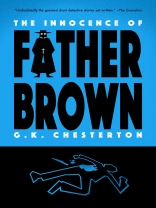Quirky, affable, Father Brown made his first appearance in the short story ‘The Blue Cross’ in 1910. The Innocence of Father Brown (1911) collects this story and eleven others in what is the first of five Father Brown volumes. Chesterton describes his unlikely crack detective as a short, stumpy Roman Catholic priest, with shapeless clothes, a large umbrella, and an uncanny insight into the criminal mind. Characteristically humble and usually rather quiet, except to say something profound, Father Brown relies more on intuition than deduction to solve mysteries, often assisted by the reformed criminal M. Hercule Flambeau. Chesterton’s wildly popular Father Brown stories-which he continued to write until his death in 1936-are among the most beloved of the detective fiction genre.
قائمة المحتويات
Contents
The Blue Cross
The Secret Garden
The Queer Feet
The Flying Stars
The Invisible Man
The Honor of Israel Gow
The Wrong Shape
The Sins of Prince Saradine
The Hammer of God
The Eye of Apollo
The Sign of the Broken Sword
The Three Tools of Death
Biographical Timeline
عن المؤلف
G. K. Chesterton (1874-1936) was a prolific English writer, philosopher, lay theologian, and literary and art critic. He is best known in mystery circles as the creator of the fictional priest-detective Father Brown and for the metaphysical thriller The Man Who Was Thursday. Often referred to as ‘the prince of paradox, ‘ Chesterton frequently made his points by turning familiar sayings and proverbs inside out. Chesterton attended the Slade School of Art, a department of University College London, where he took classes in illustration and literature, though he did not complete a degree in either subject. In 1895, at the age of twenty-one, he began working for the London publisher George Redway. A year later he moved to another publisher, T. Fisher Unwin, where he undertook his first work in journalism, illustration, and literary criticism. In addition to writing fifty-three Father Brown stories, Chesterton authored articles and books of social criticism, philosophy, theology, economics, literary criticism, biography, and poetry.












